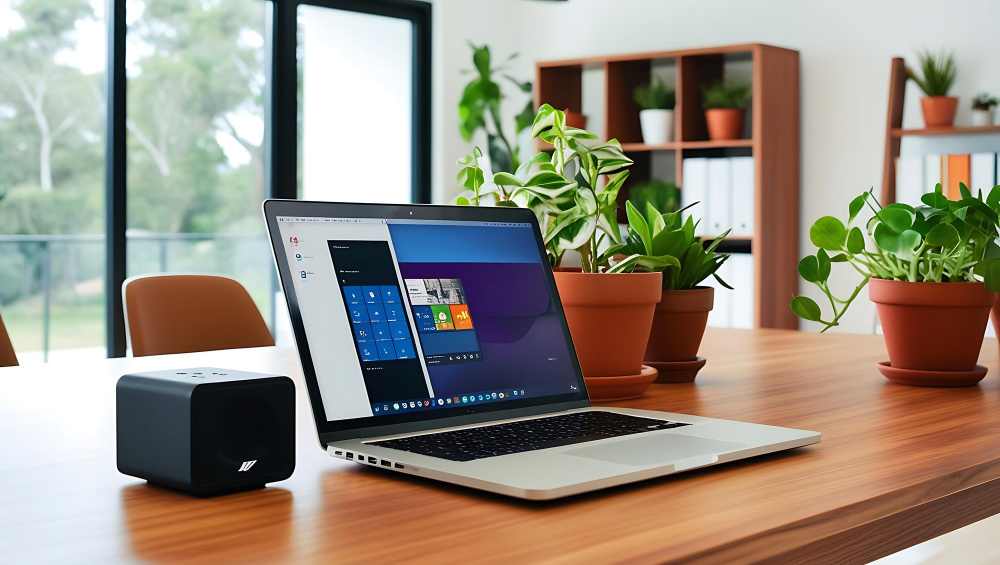Windows 11 is a sleek and modern operating system designed to enhance user experience and improve productivity. However, to make the most of its features, users often need to fine-tune the system to suit their workflow. From reducing distractions to speeding up performance, several tweaks can transform your Windows 11 experience into a productivity powerhouse. In this article, we’ll cover essential tweaks to optimize Windows 11 for maximum productivity.
1. Customize the Start Menu and Taskbar
Streamline the Start Menu: The default Start Menu in Windows 11 can feel cluttered. Customizing it to show only essential apps helps reduce visual noise. Right-click on the Start Menu and select “Settings” to personalize the layout. Pin frequently used applications and remove unnecessary ones.
Taskbar Enhancements: Windows 11 centers the Taskbar by default. While this aesthetic choice is pleasing, productivity-oriented users may prefer the traditional left-aligned Taskbar. To adjust this, go to Settings > Personalization > Taskbar and change the Taskbar alignment to “Left.” This aligns apps in a more familiar, ergonomic position.
Additionally, reduce the number of unnecessary icons in the Taskbar. Disable widgets and unnecessary system tray icons to keep the interface clean.
2. Enable Snap Layouts and Virtual Desktops
Snap Layouts for Multitasking: Snap Layouts is a game-changer for multitasking. Hover over the maximize button of any window, and you’ll see different layout options. Choose the one that best fits your workflow to easily arrange multiple windows on your screen.
For power users, the shortcut Win + Z quickly activates Snap Layouts, making window management more efficient.
Virtual Desktops: Virtual Desktops allow you to separate workspaces. This is particularly useful for organizing different projects. Press Win + Tab and select “New Desktop” to create additional desktops. You can switch between them using Ctrl + Win + Left/Right Arrow. This keeps your workspace organized and minimizes distractions.
3. Optimize System Performance
Disable Startup Programs: Too many startup programs can slow down boot times and overall performance. Go to Task Manager (Ctrl + Shift + Esc), navigate to the “Startup” tab, and disable unnecessary applications.
Adjust Power Settings: For maximum performance, switch to High Performance mode. Go to Settings > System > Power & Battery and choose “Best Performance” under the Power Mode options.
Background Apps: Restrict unnecessary apps from running in the background. Go to Settings > Apps > Apps & Features and click on an app. Select “Advanced options” and disable background activity.
4. Focus Assist and Notifications
Enable Focus Assist: Focus Assist helps reduce distractions by muting notifications during work hours. Go to Settings > System > Focus Assist and choose between Priority Only, Alarms Only, or customize your own rules.
Notification Settings: Manage app notifications by going to Settings > System > Notifications. Turn off notifications for less important apps or customize how and when they appear.
5. File Explorer and Search Optimization
Speed Up File Explorer: By default, File Explorer opens to Quick Access. This can slow down navigation. Change the default to open This PC by opening File Explorer, clicking “View > Options,” and under the “General” tab, select “This PC” from the dropdown menu.
Indexing Options: Optimize Windows Search by modifying indexing options. Go to Settings > Privacy & Security > Searching Windows and choose “Classic” mode to index fewer files, resulting in faster search performance.
6. Utilize Microsoft PowerToys
Microsoft PowerToys is a suite of utilities designed to enhance productivity. Download PowerToys from the Microsoft Store and take advantage of tools like FancyZones for window tiling, PowerRename for bulk renaming files, and Keyboard Manager for custom shortcuts.
Key PowerToys to Use:
- FancyZones: Create custom layouts for snapping windows.
- PowerToys Run: A quick launcher activated by Alt + Space.
- Keyboard Manager: Remap keys for efficiency.
7. Optimize OneDrive and Cloud Storage
Selective Sync: Avoid syncing unnecessary files to your device by selecting specific folders to sync. Right-click the OneDrive icon in the system tray, select “Settings,” go to “Account,” and choose “Choose folders.”
File On-Demand: Enable Files On-Demand to keep files in the cloud until needed. This saves disk space and speeds up system performance.
8. Keyboard Shortcuts and Productivity Hacks
Essential Shortcuts:
- Win + D: Show desktop.
- Win + A: Open quick settings.
- Win + I: Open settings.
- Win + L: Lock your PC.
- Win + V: Open clipboard history.
Clipboard History: Enable clipboard history by going to Settings > System > Clipboard and toggling on Clipboard History. This allows you to copy multiple items and paste them as needed.
9. Enhance Security Without Slowing Down Productivity
Windows Security: Keep your system secure by enabling essential protections. Go to Settings > Privacy & Security > Windows Security and ensure virus and threat protection, firewall, and account protection are active.
BitLocker Encryption: For added data security, enable BitLocker on drives that support it. Go to Settings > System > Storage > Advanced storage settings > BitLocker Drive Encryption and turn it on.
10. Personalize for Comfort and Efficiency
Dark Mode and Theme Customization: Reduce eye strain by enabling dark mode. Go to Settings > Personalization > Colors and select “Dark” under Choose Your Mode.
Font Scaling and Display: Adjust text scaling by navigating to Settings > Accessibility > Text Size and modify the slider to increase readability. For multi-monitor setups, ensure each display has the recommended scaling.
Conclusion
Optimizing Windows 11 for productivity involves customizing the interface, streamlining performance, and minimizing distractions. By implementing these tweaks, you can create an efficient, distraction-free workspace that maximizes output. Take the time to explore these settings and tailor your Windows 11 experience to suit your productivity needs.







